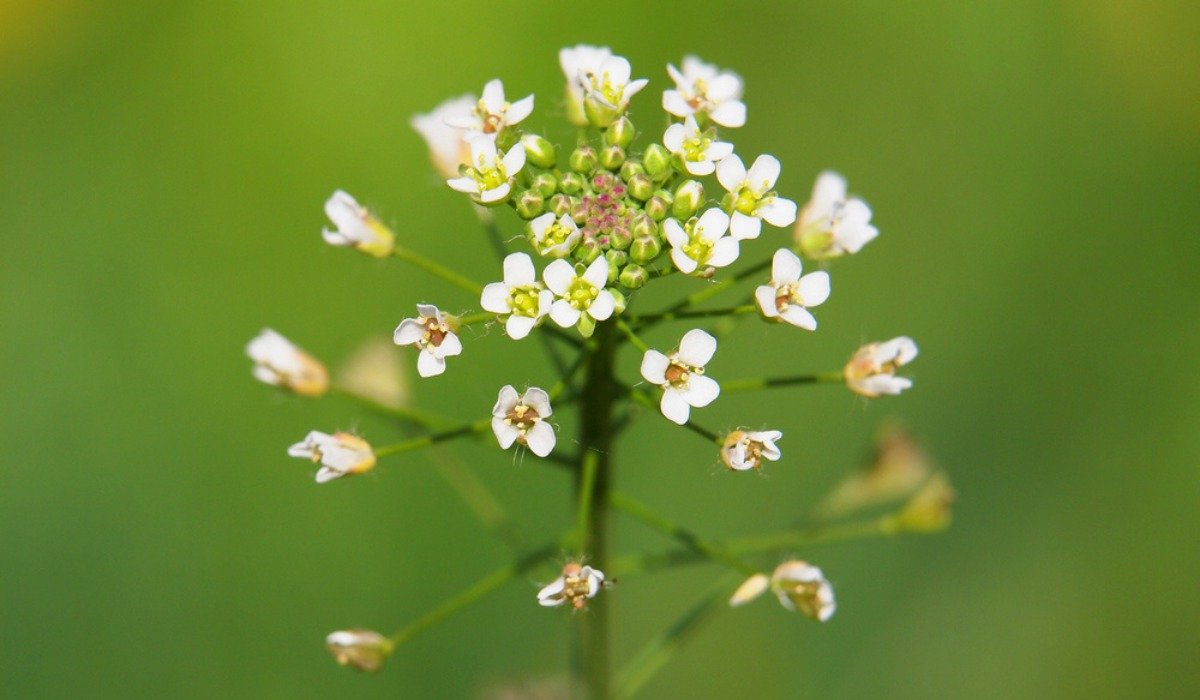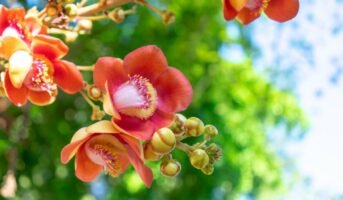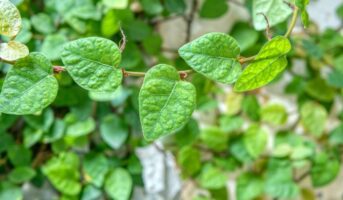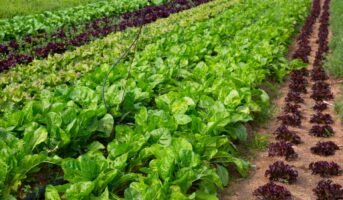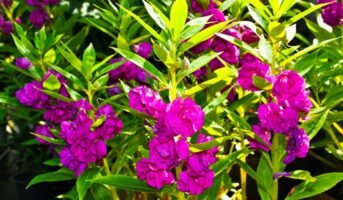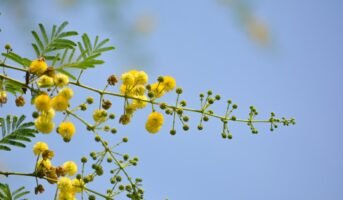A thin, erect, annual to transient perennial plant, Capsella bursa-pastoris, commonly called Shepherd’s purse, typically reaches heights of 15 to 70 cm. The plant is widely farmed in several parts of the world as cabbage-flavoured spring greens. In Japan, it is one of the key components of a traditional rice and barley gruel that is consumed on January 7th. It is frequently taken from the wild for local use as food and medicine.

Source: Pinterest
See also: Dypsis Lutescens: Meaning, common names, benefits, and plant care tips
Capsella bursa-pastoris: Key facts
| Family | Brassicaceae |
| Common Name | Shepherd’s Purse |
| Native | Mediterranean |
| Perennial or Annual | Annual |
| Genus | Capsella |
| Foliage | Semi-evergreen |
Capsella bursa-pastoris: Features
Leaves
Leaves emerge from a basal rosette at first. Young leaves are initially spherical and elongated before becoming variously lobed, toothed, or wavy. Basal leaves are stalked and highly diverse in shape. Alternate, smaller stem leaves have bases that clasp and smooth to serrated margins.
Stems
Up to 2-foot-tall, erect, hairy stems that bolt to blossom from a basal rosette. Typically, flower stems have no branches and few or no leaves.
Fruit and flowers
In terminal clusters, white flowers with four tiny petals can be observed. Fruit comes in the form of distinct heart- to triangle-shaped pods that are found on tall, unbranched stems.

Source: Pinterest
Capsella bursa-pastoris: Growing tips
- The optimal conditions for Capsella bursa-pastoris growth are direct sunlight and aerated loamy soil. For a range of herbal and culinary preparations, aerial sections of this plant are utilised fresh or dried.
- It develops a single, two-foot-tall stem with numerous little, white flowers branching off of it at the top. Any time of the year, the blooms can blossom, and they eventually develop into seed pods that resemble little satchels or “purses.”
- Once seedlings have taken root, shepherd’s purse, which is simple to grow from seed, loves drier soils. After the risk of frost has passed, plant by scattering seeds over a prepared bed and tamping them into the soil. Within ten days, little seedlings should appear and grow quickly.
Capsella bursa-pastoris: Maintenance tips
Water Requirements
To reduce the quantity of moisture lost to evaporation, try to avoid watering on sunny afternoons. If your plant is in a pot, check the topsoil by feeling it with your finger or by gazing at it. Whatever the case, water if it hasn’t rained in a month!
Sunlight
It prefers to be in a sunny area.
Soil
Plants do well in most types of soil, from clay to sandy loams, but they don’t enjoy being wet. Even in the poorest soils, they will grow, but in those conditions, the plants may only grow to a few centimetres tall before flowering and setting seed.
Capsella bursa-pastoris: Uses
- Shepherd’s purse may aid in the treatment of postpartum haemorrhage or bleeding after childbirth. In one group of 100 women with postpartum haemorrhage, the hormone oxytocin reduced bleeding. Another group that received both oxytocin and ten drops of shepherd’s purse saw a significantly greater decrease.
- Shepherd’s purse may also aid in heavy bleeding during your menstrual cycle. In a study of 84 women, those who took 1,000 mg of the anti-inflammatory drug mefenamic acid along with a shepherd’s purse daily for the duration of their menstrual period experienced less menstrual bleeding than those who only took mefenamic acid.
FAQs:
Is a shepherd's purse edible?
Although the shepherd’s purse is a wild herb, it is filled with nutrition. The leaves and blooms have a taste similar to cress or cabbage and can be consumed raw or cooked. The seed pods can be fried and give salads a great crunch and texture. When the seeds are aged, they develop a spicy flavour and can be used in place of pepper.
What is the life cycle of a shepherd's purse?
Both shepherd's purse and wild mustard have a relatively brief life cycle, emerging and maturing to produce seed in as little as 30 days.
Housing News Desk is the news desk of leading online real estate portal, Housing.com. Housing News Desk focuses on a variety of topics such as real estate laws, taxes, current news, property trends, home loans, rentals, décor, green homes, home improvement, etc. The main objective of the news desk, is to cover the real estate sector from the perspective of providing information that is useful to the end-user.
Facebook: https://www.facebook.com/housing.com/
Twitter: https://twitter.com/Housing
Email: [email protected]
